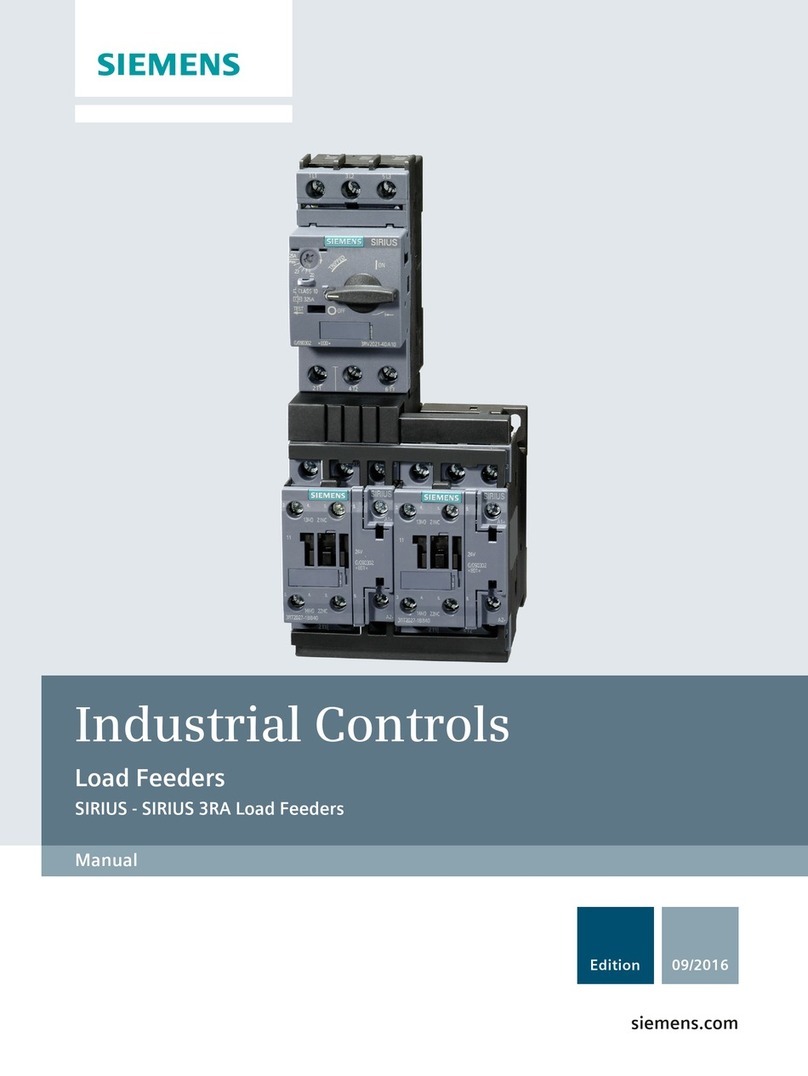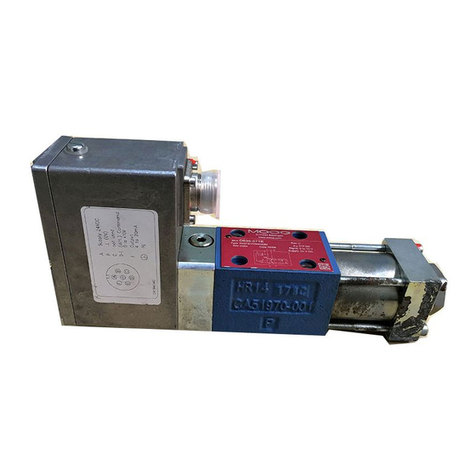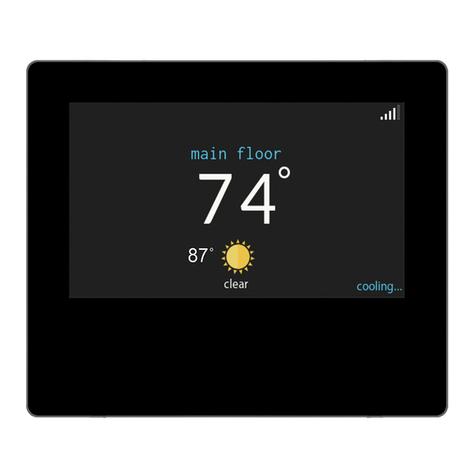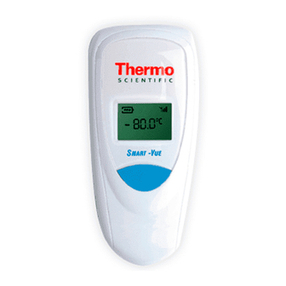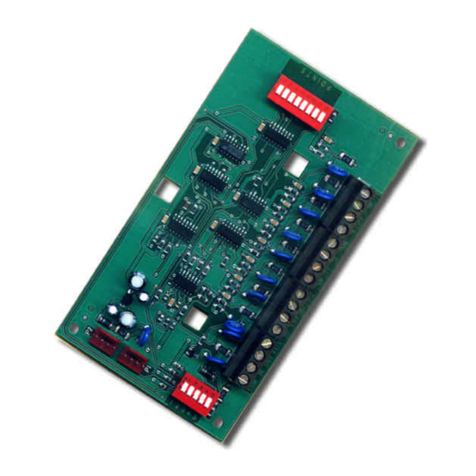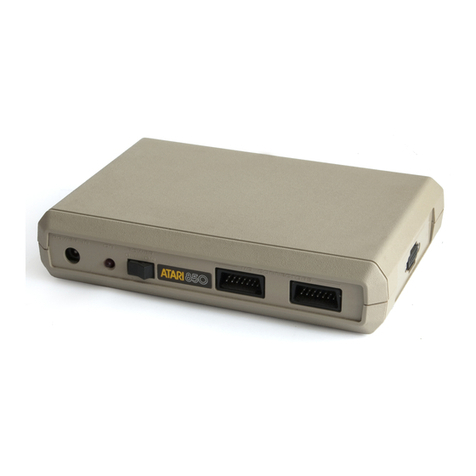Governors America SYC6714 User manual

1
Governors America Corp. © 2020 Copyright All Rights Reserved
SYC6714 03-2020-B1 PIB4030
SYC6714
Synchronizer
1
OVERVIEW
GENERATOR AND MAIN BUS AC INPUT
Sensitivity 50 V RMS - 500 V RMS
(line-to-line or line neutral)
Frequency 50 or 60 Hz nominal
(400 Hz special order)
Isolation 1000 V minimum
Burden less than 2.5 V A
BATTERY/DC POWER SUPPLY REQUIREMENTS
(TERMINALS 8-10)
Low Voltage Range
(Terminals 8 & 9 connected) 10 - 16 V DC
High Voltage Range 14 - 40 V DC
Current Required less than 200 mA
PERFORMANCE (WITH ESD SERIES)
Capture Range +4% based on 3250 Hz
Output Voltage 3 - 7 V DC
Breaker Closure Window Angle 1° - 25°
Relay Contact Rating
(N.O. or N.C.) 10 A @ 28 V DC
Phase Error Adjust Range +/- 10° typical
2SPECIFICATIONS
ENVIRONMENTAL
Temperature Range -40°F to +180° F(-40°C to +85°C)
Humidity up to 100%
Vibration 5g (20 – 200 Hz)
Case Corrosion resistant and fungus proof IP22
with terminal cover in place
PHYSICAL
Dimensions 5.72 in [146 mm] x 7.03 in [179 mm]
x 1in [25 mm]
Weight 1.5 lb (0.68 kg)
Mounting any position, vertical preferred
The GAC SYC6714 accessory module adjusts a speed control unit to
obtain an equal AC phase relationship between the generator and the
main bus (mains). When paralleling a synchronous generator to a main
bus, generators, or utility.
The SYC6714 provides the SYNC CHECK function which activates a
relay to connect the generator to the main bus. Typically this takes less
than 3 seconds when the generator sets are at rated speed and using
optimum speed controller performance settings.
The GAC SYC6714 is a CE (Community Europe) approved unit the
installation requirements must be met to maintain EMC capabilities.

2
Governors America Corp. © 2020 Copyright All Rights Reserved
SYC6714 03-2020-B1 PIB4030
Since the SYC6714 is a CE (Community Europe) approved unit, if used as a CE unit, all GAC installation requirements in-
cluding the following CE specic, must be met to maintain EMC capabilities. (see Declaration of Conformity to EC Directives)
1. The synchronizer must be mounted against a metal ground plate with four bolts which make positive electrical connec-
tions between the case and the back plane, or backing plate PL128, available from GAC, must be installed.
2. All cable shields on connections to the synchronizer must be connected to the case at the screw on the case as shown
on Wiring diagram.
3. The battery minus connection to Terminal 10 must be jumper wired to the case as shown in the Wiring diagram.
4. The installer must refer to the Wiring Diagram for proper electrical connections.
3INSTALLATION
The SYC6714 can be mounted in a cabinet with other equipment. Limit exposure of the unit to extreme temperatures. Mount the
SYC6714 vertically if exposed to moisture or wetness to prevent accumulation inside the unit.
The governor system must be in good working order and adjusted correctly for the synchronizer to properly operate in the system. The
SYC6714 is factory set to near optimum settings, therefore, large increment adjustments are not normally needed.
An overspeed shutdown device, independent of the governor system, should be used to prevent loss of
engine control which may cause personal injury or equipment damage.
Do not rely exclusively on the governor system electric actuator to prevent overspeed. A secondary shut-
o device, such as a fuel solenoid must be used.

3
Governors America Corp. © 2020 Copyright All Rights Reserved
SYC6714 03-2020-B1 PIB4030
4WIRING AND DIMENSIONS
Typical electrical connections are shown in the Wiring diagram below. Connecting cables carry low current and do not require special sized
wire. The connection between the speed controller and the synchronizer Terminal 6 is sensitive and must be sheilded for its entire length.
The sheild must be connected at one end only and must be terminated to the case.
Phasing of main power (MAINS) and the generator signals occurs when Terminals 1 and 3 are in phase.
Paralleling out-of-phase generators may cause equipment damage.
High AC Voltage may be present at Terminals 1 - 4. De-engerize and check voltages before use.

4
Governors America Corp. © 2020 Copyright All Rights Reserved
SYC6714 03-2020-B1 PIB4030
5SETUP AND SYNCHRONIZATION
After connecting your system as detailed in the Wiring diagram, adjust synchronizer performance. This mode allows for the generator set
to synchronize to the mains without paralleling occuring.
1. Add a jumper or remove relay wires at one of the following locations:
• Add a jumper between Terminals 7 & 10
• OR disconnect the relay wires at Terminals 13 & 14 or Terminals 14 & 15
2. Conrm the generators governed frequency is set within 0.1 Hz of the mains or other generator.
3. Close the connections between the synchronizer and the speed controller.
4. Trim the speed controller setting so that the generator frequency is within 0.1Hz of the mains (or other generator) frequency.
5. Note the status of the LEDs on the SYC1674. The MAINS, GEN, and DC POWER LEDs should show RED.
6. Close the connections between the synchronizer and the speed controller.
7. Close the switch connected from Terminals 5 & 6 between the governing system and the SYC6714.
8. Close auxiliary contacts [Parallel Cable +/-] .
9. The RED SYNC ENABLED LED should illuminate and the SYC6714 will attempt to synchronize.
A measurement of the phase relationship between the two AC inputs is continuously avilable as an analog voltage at Terminal 11, where
5.1 V indicates phase condition. The SYC6714 controls include GAIN, Stability, to adjust synchronization and performance.
• GAIN adjusts the sensitivity of the synchronizationer to the speed controller, where CW rotation increases the sensitivity.
• STABILITY adjusts the rate of response time of the synchrozers output.
• BREAKER CLOSURE ANGLE provides a Sync Check circuit with its own variable phase angle window for controlling breaker clo-
sure, Window phase angle may be adjusted between 0°and 25°.
INITIAL ADJUSTMENT
ADJUSTING AND OPTIMIZING GAIN
ADJUSTING STABILITY
ADJUSTING PHASE ERROR
On the SYC6714, adjust GAIN by turning GAIN Adjustment. as far clockwise (CW) as possible without causing instability in the system,
then turn the GAIN adjustment one division counterclockwise (CCW). When the system is unstable, the main breaker is inhibited from
closing.
To optimize GAIN, unsynchronize the system by opening the switch between Terminals 5 & 6 or momentarily move the engine throttle.
Reinstate the synchronizer and observe the speed and stability of the synchronization with a synchroscope or a phase meter. Readjust
GAIN as neccessary.
If necessary, adjust STABILITY for fast, smooth synchroization without instability. A CCW setting will result in a slower (more damped)
but smoother response.
Set the PHASE ERROR ADJUSTMENT for exact zero phase error. Verify this on a synchroscope, as a measurement of near zero AC
voltage or a null in AC voltage between Terminals 1 & 3 when the mains and generator voltage are equal.
BREAKER CLOSURE ANGLE
Rotate the BREAKER CLOSURE ANGLE adjustment clockwise to reduce the window to near 0, inhibiting the breaker closure. The
phase angle must stay within the angle setting for at least .5 s for synchronization to occur; system stability is very important during
this time or the setting will need to be set again until the angle is saved.
To make further adjustment, with the system operating and synchronized, set the breaker closure angle to 0 (fully CW). Adjust
BREAKER CLOSURE CCW until the BREAKER CLOSURE RELAY LED lights. The relay should open. Turn the adjustment CCW
one additional division. The following approximate phase angle window values may be used for setting the breaker closure angle.
BREAKER CLOSURE ANGLE ADJUSTMENT
Adjustment Setting Breaker Closure Angle
100 0°
70 6°
50 12°
20 18°
0 25°

5
Governors America Corp. © 2020 Copyright All Rights Reserved
SYC6714 03-2020-B1 PIB4030
Re-enable the break control function by removing the jumper wire between Terminals 7 & 10 and /or reconnect the relay wire
between Terminals 13 & 14 or Terminals 14 & 15. Synchronization and paralleling may now be performed.
For a nal check, start the engine and synchronize the system to ensure that all adjustments are optimized.
RE-ENABLE BREAKER CONTROL FUNCTION
DEAD BUS OPERATION
VOLTAGE MATCHING AND MONITORING
OBTAINING NEUTRAL OUTPUT
If the MAINS input is missing, the synchronizer will not attempt to synchronize the system. A separate system may be used to
close the oncoming generator onto the bus which will provide a reference to which others may synchronize.
GAC oers additional modules for support.
The VMA100, when combined with the SCY6714 combines all the voltage monitoring functions and adjustment functions.
Once synchronization is complete, and the units are paralled, the synchronizer should be reset to its neutral output and placed in the
disabled position.
Use one of the following to set the synchronizer in a neutral output, ready for its next use:
• Following the wiring diagram review the switching method that resets the unit by disconnecting the synchronizer output from the
speed controller and opening the reset line at Terminal 5.
OR
• Disconnect the MAINS (Terminals 3 & 4) to reset the synchronizer. The synchronizer now assumes a neutral position with Terminal 6
holding a constant output voltage of 5.1 V.
If performance is unsatisfactory, consult the trouble shooting section.
LED
The following LED view is considered nominal for a working system.
LED LABEL NOMINAL SETTING FUNCTION
1 SYNCHRONIZED Green Generator voltage present
2 MAINS Red Mains voltage present
3 GEN Red Synchronizer enabled
4 DC POWER Red Internal voltage supply present
5 SYNC ENABLED Red Relay energized
6 BREAKER CLOSURE RELAY Red Mains and generator synchronized
5SETUP AND SYNCHRONIZATION (CONTINUED)

6
Governors America Corp. © 2020 Copyright All Rights Reserved
SYC6714 03-2020-B1 PIB4030
SYSTEM FAILS TO OPERATE or SYNCHRONIZES POORLY
STEP CHECKS
1. Measure the battery voltage between Terminals 8 (+) and 10 (-) . It should be 12 or 24 V DC nominal.
2. Note the RED DC POWER LED. Measure the internal 10 V DC supply between Terminals 12 (+) and 10 (-). It should be 9.6
– 10.4 V DC.
3. Note the RED GEN LED. Measure the AC Voltage between Terminals 1 & 2. It should be 50-500 V AC.
4. Note the RED MAINS LED. Measure the AC Voltage between Terminals 3 & 4. It should be 50-500 V AC
5. Note the RED SYNC ENABLE LED. Check (ON/OFF) switch (at Terminals 5 & 6) and auxiliary contacts (Parallel Cable +/-).
Measure the DC voltage between Terminals 5 (+) & 10 (-). It must be greater than 8 V DC. (See Wiring Diagram)
6. Check the DC voltage between Terminals 7 (+) & 10 (-). This should be 10 V DC when in phase. Check the Test switch posi-
tion. It must be opened to synchronized.
7. Also check the enable signal from the voltage matching unit if used.
8. Measure the internal Phase Error Voltage, between Terminals 11 (+) and 10 (-). These reading should be as follows:
• If in phase, 5.1V DC
• If less than 5.1 V DC, the generator frequency is higher than the mains frequency. Decrease the speed controller speed until
the system is synchronized.
• If greater than 5.1 V DC, the generator frequency is lower than the mains frequency. Increase the speed controller speed
until the system is synchronized.
9. Measure the synchronizers output analog voltage between Terminals 6 (+) and 10 (-). If the generator frequency is lower than
mains, the voltage should be lower than 5.1 V DC and visa versa. Adjust the speed controller speed until 5.1 V DC is mea-
sured between Terminals 6 & 10.
10. If the GREEN SYNCHRONIZED LED does not light, the breaker closure angle may be set too narrow. Adjust the BREAKER
ANGLE control CCW until the GREEN LED lights.
11. If the GREEN SYNCHRONIZED LED lights continuously but the internal breaker closure relay fails to close, go to step 6
(relay inhibited).
12. If the unit synchronizes but does not close the breaker, check that the N.O. contacts at Terminal 13 & 14 have closed. If not
the synchronizer is defective.
FAILURE TO SYNCHRONIZE or SLOW SYNCHRONIZATION
1. The problem is usually caused by the governor system performance not being tightly controlled. The governor system perfor-
mance must be excellent to obtain fast, consistent synchronization. Controlling the phase of the generator is a more demand-
ing operation than basic speed control.
Review and optimize the governor system before attempting to service the synchronizer. Other issues may lie within the
engine and how well it is operating.
2. Severe harmonic distortion of the AC wave from the power converters can disturb the synchronizer. If the wave form has more
than 10% distortion, or other wave form issues are suspected, contact GAC for an external AC lter recommendation.
6TROUBLESHOOTING
The following troubleshooting steps are helpful if initial setup is not working as desired. Please contact your GAC representative with
any questions.
Table of contents
Other Governors America Control Unit manuals
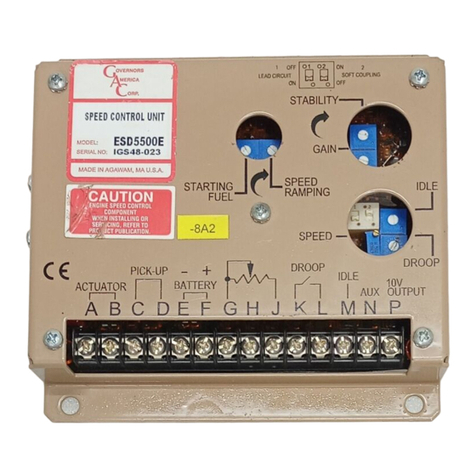
Governors America
Governors America ESD5500E Series User manual

Governors America
Governors America ESD2300 Series User manual

Governors America
Governors America ESD2200 Series User manual

Governors America
Governors America ESD2100 Series User manual

Governors America
Governors America DDM-101 User manual

Governors America
Governors America ESD5300 Series User manual
Popular Control Unit manuals by other brands

vacuubrand
vacuubrand VAC 24seven Instructions for use

Texas Instruments
Texas Instruments LM5123EVM-BST user guide
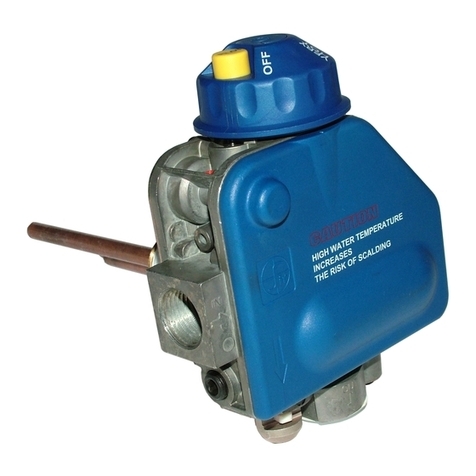
Sit
Sit 650 DELTA Use and Installation Instructions

Zurn Wilkins
Zurn Wilkins 375 Installation, Testing, Maintenance Instructions

GE
GE B90 instruction manual
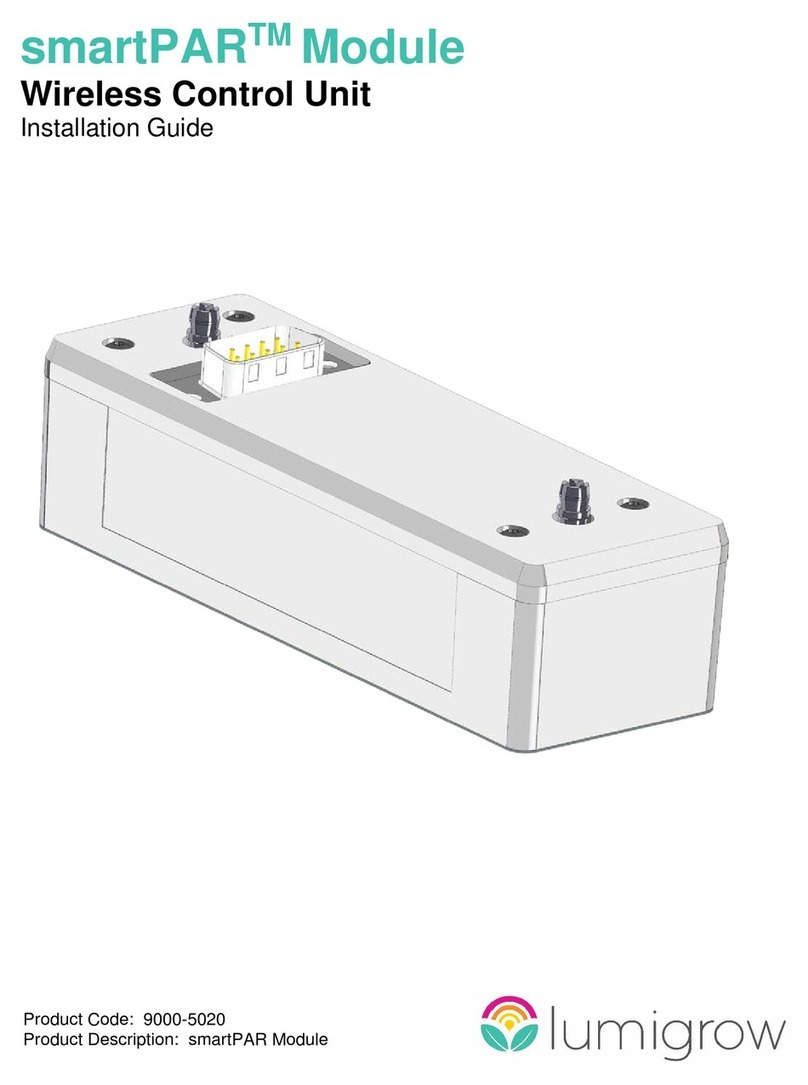
LumiGrow
LumiGrow smartPAR installation guide
